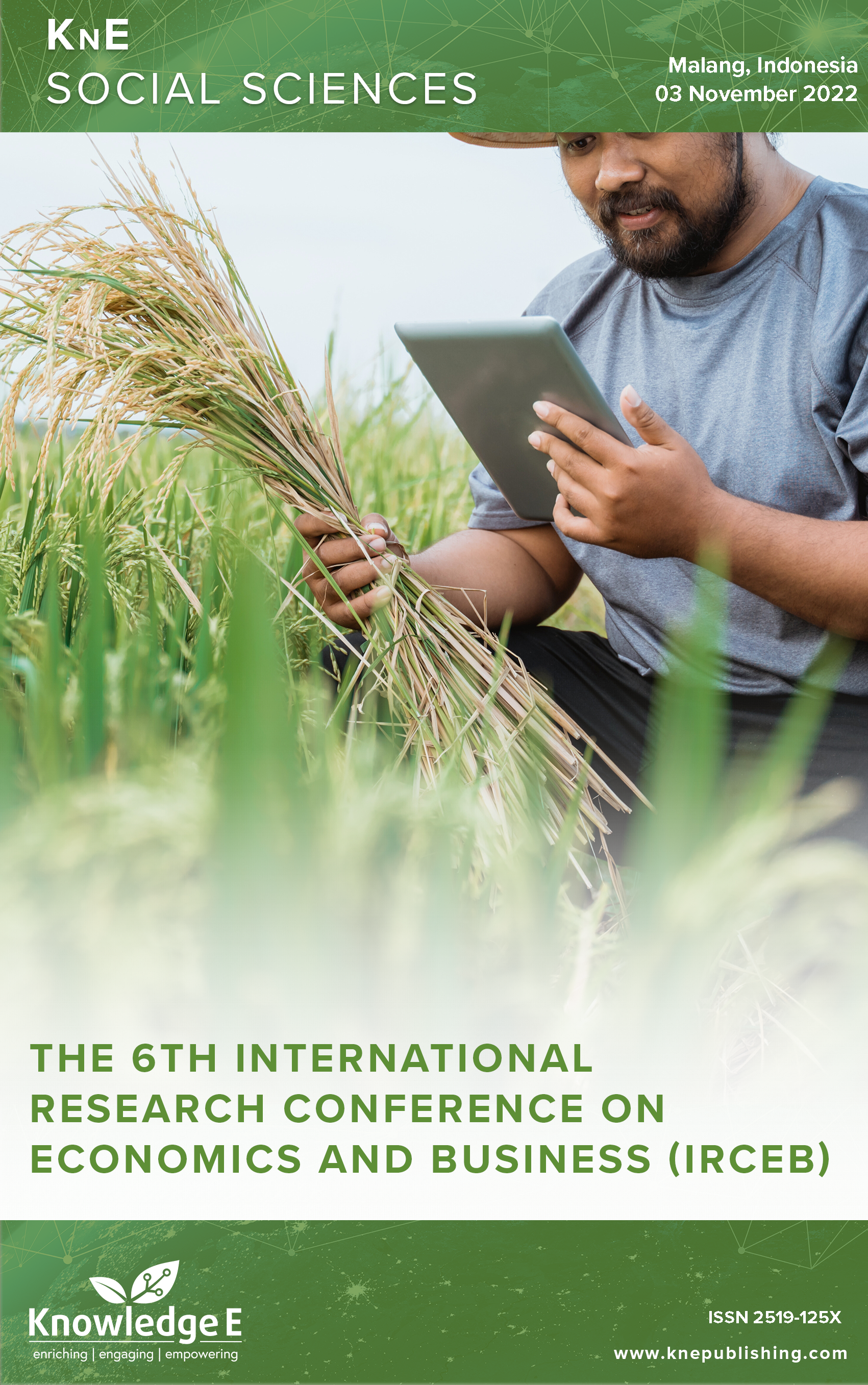Policy Formulation Based on Village Development Index (IDM) in East Java Province
DOI:
https://doi.org/10.18502/kss.v9i4.15065Abstract
The Ministry of Village published Ministerial Regulation (PERMENDES) No. 2 of 2016 regulation, on the subject of Building Village Index. The building village index is an index composite from the social resilience index, economic resilience index, and ecology resilience index. IDM can be used to measure the success of a village in carrying out village development. Status improvement of villages in the Regency/City of East Java is needed, subsequent to IDM results. The purpose of this research is to describe the condition of villages in regencies/cities in East Java based on the three IDM forming indices and to find out the East Java Government’s policy direction in increasing village potential. The research method used is qualitative descriptive with explanatory/naturalistic research. The result show that, in 2019, the majority of villages in the Regency/City Province East Java were developing villages and there were still two very disadvantaged villages. The result of the distribution of the resilience index shows that the social resilience index is the best distribution. It is necessary to have a strategy to achieve the overall development. The East Java Provincial Government provides a strategy for realizing development through village potential, these strategies include, Lumpang Bude, Bumdesa Clinic, Uncle Village, East Java Puspa, Empowered Village, Bank Mushroom Seeds, Sapa Village, and Simanis.
Keywords: ecological resilience index, economic resilience index, social resilience index, village development index, village status
References
Bai, B. F. Functions of village classification based on POI data and social practice in rural revitalization. Arabian Journal of Geosciences, 2021, pp. 1-14. DOI: https://doi.org/10.1007/s12517-021-08001-6
Endah, K. Pemberdayaan Masyarakat: Menggali Potensi Lokal Desa. Jurnal Perencanaan Pembangunan Wilayah dan Perdesaan, 2020, pp. 187-202.
Hendrarso, P. H. Kajian Pengentasan Desa Tertinggal Melalui Pendekatan Indeks Desa Membangun. Jurnal Ilmiah Ilmu Administrasi, 2021, pp. 57-69. DOI: https://doi.org/10.31334/transparansi.v4i1.1607
Jiajun, Q. K. (2008). Analysis of Types and Changes of Village-level Economy Rural Gongyi City, Henan Province Since 1990. China-Australia Cooperative Research Institute for Geographic Information Analysis and Applications, 2008, pp. 101-108. DOI: https://doi.org/10.1007/s11769-008-0101-x
Kementerian Desa. Peraturan Menteri (PERMENDES) No. 2 Tahun 2016 tentang Indeks Desa Membangun (IDM. Jakarta), 2016.
Kementerian Desa, PDTT. Indeks Desa Membangun (IDM). Jakarta: Kementerian Desa, Pembangunan Daerah Tertinggal dan Transmigrasi, 2015.
Kementerian Desa, PDTT. Indeks Desa Membangun (IDM). Jakarta: Kementerian Desa, Pembangunan Daerah Tertinggal dan Transmigrasi, 2019.
Kementerian Desa, PDTT. Status IDM Indeks Desa Membangun Provinsi Kabupaten Kecamatan Tahun 2019. Jakarta: Kementerian Desa, Pembangunan Daerah Tertinggal dan Transmigrasi, 2019.
Kharisma, B. W. Dampak Anggaran, Kesulitan Geografis, dan Rumah Tangga Desa terhadap Status Desa di Provinsi Riau. Journal of Regional and Rural Development Planning, 2021, pp. 187-202. DOI: https://doi.org/10.29244/jp2wd.2021.5.3.187-202
Kurniawan, A. R. Effectiveness of Using Village Funds In Improving Village Status Based on The Building Village Index (IDM) in Kuantan Singingi Regency. Journal of Goverment, Social and Politics, 2021, pp. 45-55. DOI: https://doi.org/10.25299/jkp.2021.vol7(2).9534
Mohammad, Y. Rapat Kerja Inovasi Perangkat Daerah Provinsi Jawa Timur Tahun 2021. Surabaya: Dinas Pemberdayaan Masyarakat Dan Desa Provinsi Jawa Timur, 2021.
Putong, J. S. Analisis Perbedaan Indeks Desa Membangun di Kec. Tareran Kabupaten Minahasa Selatan. Jurnal Berkala Ilmiah Efisiensi, 2022, pp. 120-130.
Qin, X. Y. What makes better village economic development in traditional agricultural areas of China? Evidence from 338 villages . Habitat International, 2020, pp. 1-11. DOI: https://doi.org/10.1016/j.habitatint.2020.102286
Sari, N. &. (2020). Indeks Desa Membangun (IDM) di Kabupaten Barito Kuala. Jurnal Administrasi Publik dan Pembangunan, 2020, pp. 35-41. DOI: https://doi.org/10.20527/jpp.v2i1.2768
Sekretariat Kabinet Republik Indonesia. (2022, April 06). Retrieved from https://setkab.go.id/membangun-indonesia-dari-pinggiran-desa/
Setyobakti, H. M. Indentifikasi Masalah dan Potensi Desa Berbasis Indek Desa Membangun (IDM) di Desa Gondowangi Kecamatan Wagir Kabupaten Malang. Jurnal Penelitian Ilmu Ekonomi WIGA, 2017, pp. 1-14. DOI: https://doi.org/10.30741/wiga.v7i1.331
Setyowati, E. Tata Kelola Pemerintah Desa pada Perbedaan Indeks Desa Membangun (IDM): Studi Tiga Desa di Kabupaten Malang. JISPO, 2019, pp. 170-188.
Soekaryo. (2022, Mei 02). Retrieved from http://pendampingdesa.com/skemabantuan- keuangan-khusus-berbasis-kinerja-pemberdayaan-bum-desa-jatim-puspadesa- berdaya/
Sukarno, M. Analisis Pengembangan Potensi Desa Berbasis Indeks Membangun Desa (IDM) (Studi Kasus: Desa Ponggok, Kecamatan Poloharjo, Kabupaten Klaten). Prosiding Seminar Edusainstech, 2020, pp. 533-541). Yogyakarta: FMIPA UNIMUS 2020.
Suroso. Kebijakan Pembangunan Desa Tertinggal Berbasis Indeks Desa Membangun (IDM) dan Potensi Lokal. Jurnal Litbang: Media Informasi Penelitian, Pengembangan dan IPTEK, 2020, pp. 47-62. DOI: https://doi.org/10.33658/jl.v16i1.167
Undang-Undang Nomor 6 Tahun 2014 Tentang Desa. Jakarta: Sekretariat Negara, 2014.
Xaverius, F. Perkembangan Desa Berdasarkan Indeks Desa Membangun di Kabupaten Mempawah. Jurnal Borneo Akcaya, 2021, pp. 10-20. DOI: https://doi.org/10.51266/borneoakcaya.v7i1.196
Zhang, Y. H. How does the community resilience of urban village response to the government-led redevelopment? A case study of Tangjialing village in Beijing. Cities, 2019, pp. 1-13. DOI: https://doi.org/10.1016/j.cities.2019.102396

